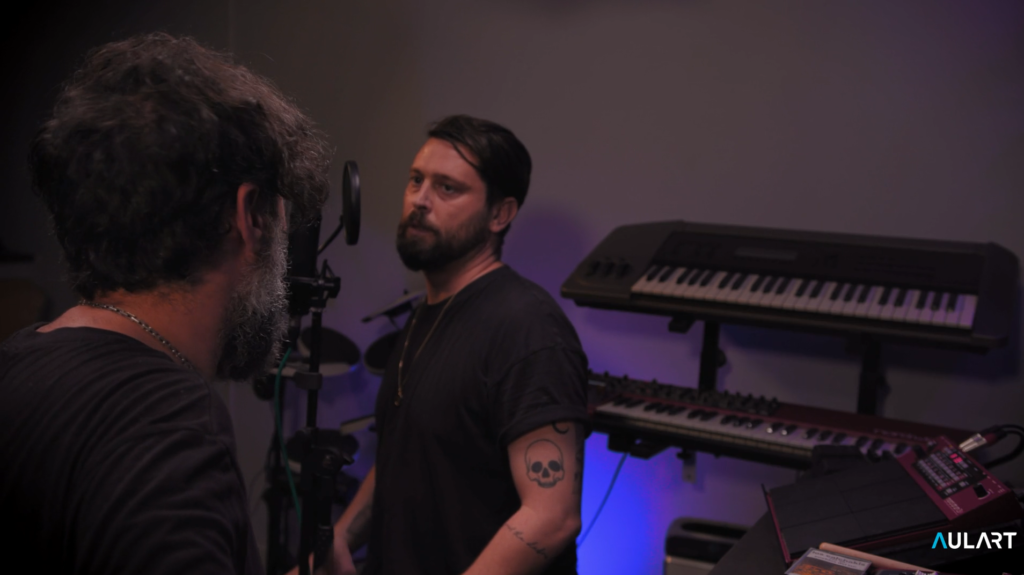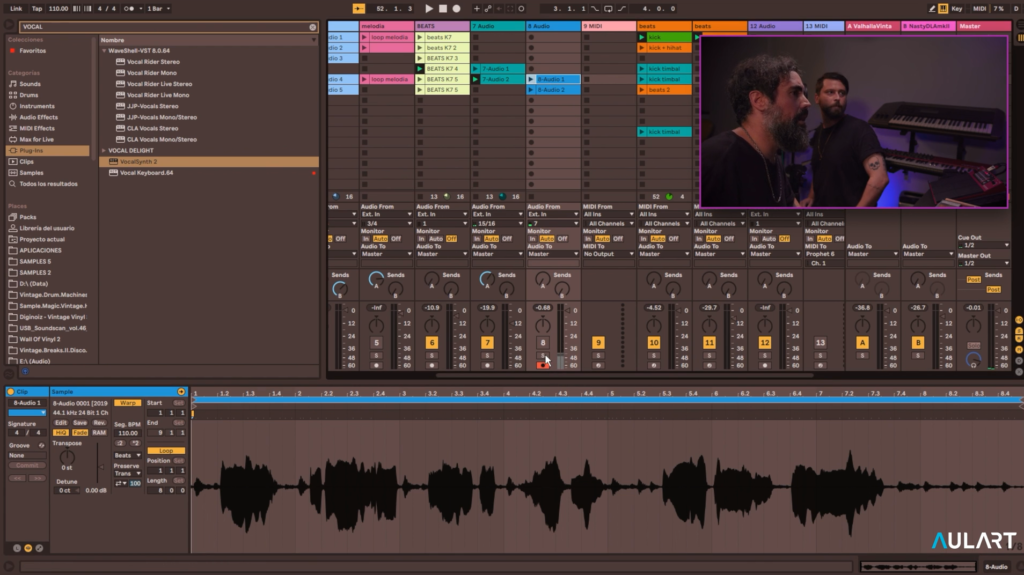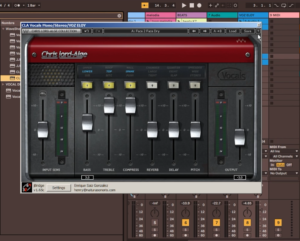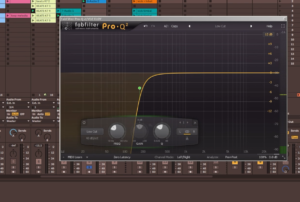If you have considered including original and recorded voices for your tracks, but do not know where to start, this tutorial will help you with some tips to keep in mind that will be very handy.
We are going to talk about equipment, how to deal with the singer, how to be productive with your takes and how to polish them.
Recording equipment
The first step is to choose a suitable microphone. A good condenser microphone will help you capture the rich, warm, clear sound you hear on tracks from your favorite artists. That said, you may also want to find originality in picking up the sound. This gives you freedom to choose a microphone considered to be of poor quality, but which can give an interesting sound.
Obviously, the acoustics of the space where you record will be decisive in the quality of the recording. If you don’t have the option to record in a studio with acoustic treatment, try to find the most suitable room in your house so those bounces from the walls or other undesired echoes do not sound. Try to have a dry response but not too much. Also play with the distance between the microphone and the walls, until you find an answer that you find pleasant and easy to edit later on.
Make sure you get comfortable headphones for the singer to record with and listen to the music without it slipping into the microphone. If your singer finds it difficult to adapt to them or cannot tune well with them on, you can tell ask her/him to sing only with one earpiece, that is, separating the other from the ear so that she/he can hear himself more in the room.
Finally, remember to use an antipop screen to make occlusive sounds of the voices softer, and avoid annoying explosions in the recording.
Warm up with the singer
Experienced singers will ask you to let them warm up their voice before they start recording. They will practice scales or review some parts of the song.
It is best not to make suggestions too early on how they should attack each specific phrase or word so as not to make them nervous. If she/he is a less experienced singer, you may need a bit of psychology to motivate her/him. On a technical level, you can help by adding a little reverb to the headphone´s mix (but without it being recorded!) So she/he can hear their own voice with a little more space.
In any case, even if you don’t say it at first to avoid making them nervous, nothing prevents you from recording during the first takes just in case they turn out well and you don’t want to miss them, or even during the warm-up, because you never know if any sound can be useful for later. Often recorded voices can be used to create samplers to make pads, bass lines, and all sorts of tricks.
During recording
A tip that will be very helpful to avoid getting takes with background noise is to remind the inexperienced singer to be careful with their feet and hands. Often times they keep up the rhythm by tapping their feet to avoid getting lost, or take the stand to feel more comfortable, and the microphone could pick up that noise.
As we have said, we do not have to limit ourselves to recording sung parts or specific lyrics. A trick that Henry Saiz explains to us in his masterclass “Musical production from studio to stage”, to take out interesting samplers that can then be used to enrich the track, is recording his singer improvising “dummy lyrics” freely, without saying specific words. In this way, they also get ideas to finish creating the lyrics, since they adapt them to the melodies they have improvised and liked the most.

Other ideas to try with your singer, if he/she is confident enough, is to have her/him experimenting with the voice, changing the accent, singing at different volumes, etc. A great technique, especially for dance lovers, is to make the singer whisper the lyrics of the song under the sung phrases. Make sure it’s on time and you’ll add a very interesting extra layer of texture to your track.
Editing the takes
Then it is time to listen to the takes and choose the best moments. It is important to name and organize the takes well to be quick when looking for a specific one.
In the case of Henry Saiz’s band, after recording a few interesting takes, they render them as they are, and all the members of the band spend a few days listening to them to find creative ideas to apply to the song, be it with the lyrics, specific melodies at specific times, etc. The idea is to finish shaping the track taking into account the singer’s work. That is something that, if you can do too because your singer wants to collaborate at that level, will bring many ideas to your music that you would not have had if you were composing only by yourself.
When editing the final takes, it is important to clean the gaps between different sentences and sections. However, keep the natural breaths of the take, since listening to a performance without them can be very strange and even annoying. What it can happen is that you have to reduce the level when the singer takes a deep breath, but make sure not to leave him “drowned”.
If you asked the vocalist to sing the same phrase multiple times to create “choir” or “background” vocals, remember to adjust the ends of each phrase well,so that the whole ensemble ends at once. It will help you a lot to apply fades, both at the beginning and at the end of the sentences, so that you do not notice that any voice gets away, especially if you later decide to pan them at different points of the stereo!
Sound processing
1. Correctional
The first step is to clean the takes to then move on to a more artistic processing. A well-configured EQ will allow you to compensate for the sound of a cheap mic and attenuate annoying frequencies or other hums that disturb listening, or enhance others to brighten or clarify the texture of the voice.
It is also important to monitor the “hiss” of the voices, those overly prominent liquid “s” that tend to dominate and cloud high frequencies. To reduce them, a De-Esser will help you.
On the other hand, you’ll also want to use some corrective compression. Nothing produces a dynamic range as broad as a vocal performance. To get it to fit into the mix, and so no syllables get swallowed by the rest of the instruments, you’ll need to use a compressor.
Reverb will help you move the singer forward or backwards in the mix and fit her/his voice better into it. A tip is to have three reverbs each on a bus – one long, one medium and one short. Automating sendings to these reverbs in different sections of the song will give you the possibility to create, from very intimate moments with a short reverb, for example, to more dramatic moments with very long reverbs.
2. Creative
When you already have the sound of the takes under control, it’s time to get creative. If what you want is to have a very natural sound, perhaps the only thing you will do is finish outlining the sound with an EQ, to finish coloring the voice to your liking, and maybe add a bit of reverb.
But if what you want is something different, we encourage you to try all kinds of processing. You can try using vocoder plugins, voice synthesizers, distortions, etc. Even an extreme reverb or compression that you would not use on any other occasion can give you very interesting results.

In his masterclass, Henry Saiz shows you how to use Midi and plugins to go further with experimentation, to control voices with the keyboard and also to apply extreme effects.
And remember that there are no limits to experiment and create variations. You can apply the effects to the whole phrase, or automate them to sound at certain times, or duplicate the phrase and apply effects to only one of the tracks, etc.
Now it’s your turn!
We hope these tips have given you fresh ideas for recording and creating music with vocals. And that you understand there are many ways to do things. There is no reason why you should go just for the traditional voices’ textures. You can experience with vocals as if they were just another instrument.









 50 Industry Music Production Tips You Must Know
50 Industry Music Production Tips You Must Know




